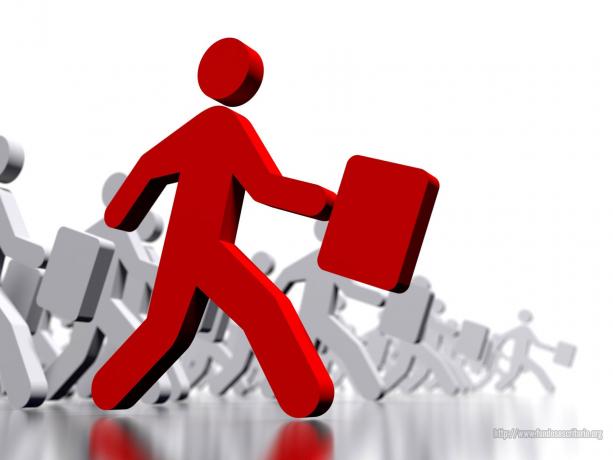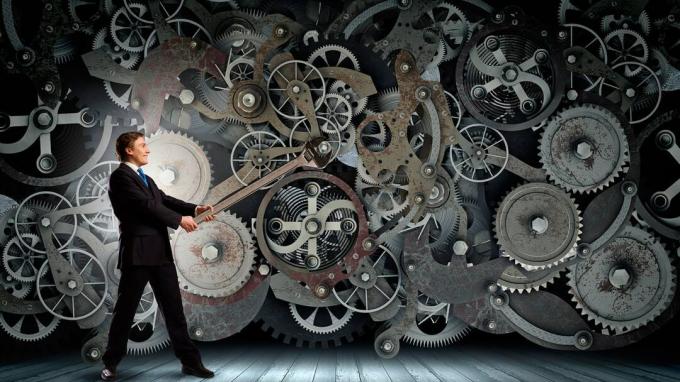The affinity diagram It is a group technique that facilitates the understanding of a structure of a certain global problem by means of a certain analysis of verbal affinities.
It is a tool that can achieve synthesize a set of verbal data as opinions, expressions, ideas or themes that when grouped work by relating to each other. Part of the principle that many of the collected data have affinity, therefore, they can be put together with few general ideas.
Advertisements
Basically, you have to write each of the concepts on notes and they should be posted on a wall. The group participants must move and organize the notes based on the relationships that have society between the different concepts.
In this article you will find:
What is the Affinity Diagram for?

Advertisements
This type of diagram is mostly used to organize large amount of data that have been obtained in advance from a brainstormingIn the same way, if there are complex problems that you want to deal with directly or also on a topic that you want to work with with the same level of complexity.
It serves to help focus on a certain problem that is not very defined according to the contributions of opinions and ideas in relation to the problem. It should be noted that this diagram does not fully solve this problem, but it can provide clear ideas about the factors that could be causing them.
Advertisements
This application is especially indicated when:
- You need to organize a larger data set.
- To directly address a certain problem.
- Work on a topic that is complex.
- Seek group consensus when executing a specific topic.
Advantages of performing the Affinity Diagram
As previously stated, the objective of this technique is to generate, organize and consolidate information of a certain problem or situation, therefore, the following advantages can be presented:
Advertisements
- Organizes a wide variety of ideas and concepts, which is very useful when organizing information.
- It can be achieved to get the focus of the effort made by the work team.
- Helps facilitate subsequent analysis.
- It allows the problem or situation to be emphasized in greater depth.
- As it is a visual technique, it allows greater creativity on the part of the work team.
- It can be used in a large number of fields, as it is a quality tool and very useful for problem solving.
When should the Affinity Diagram be used?
This diagram is very useful when you have a problem that is difficult to solve and requires a team with a lot of dexterity, to face the challenges of work that this requires and be able to assimilate the process depending on the dynamics internal.
Despite this, the fundamental tool for favorable results and solutions is the participation of all team participants, especially for the production of ideas and the various approaches to solutions.
Advertisements
It can act as an element that catalyzes the amount of ideas, comments, interpretations, opinions and recommendations that arise before a problem or fact and also focuses on the search for agreements that satisfy the different participants of the team.
An important point that must be taken into account, when create the affinity diagram, is the conformation of the working group, since it must be composed of people trained in the subject that is going to discuss, in this way you will have the guarantee that the conclusions that arise from the process are totally useful and correct.
An affinity diagram should be used when:
- The problem is disorganized.
- If you want to establish specific themes, coming from a large number of ideas and problems.
- If the problem is very difficult to understand.
- When the participation and support of the entire work team is required to deal with a certain problem.
Elaboration of the Affinity Diagram
In practical terms, this type of diagram is a graph that has the ability to specify opinions and ideas that are related to the same topic in blocks of content. They can be done physically or digitally, however, it is much more useful if the frames that compose it have mobility.
The reasoning for classifying these will depend on the correspondence, thematic coincidences, the similarity and the direct relationship they contain. To carry out your design it is necessary to follow the following steps:
Group definition
In order to implement it, a work team must be formed, where a leader or representative, who has the responsibility of guiding the entire process until solving the problem.
Problem Statement
Once the work team is formed, it must fully know the situation or the problem for which they have been brought together and know enough to be able to make favorable decisions for all. Mostly the problem is transmitted in the form of a question to elicit the reaction of the team members.
Brainstorming
When defining the problem, the participants have to find a way to answer the question that has been established as the main axis of the problem. To achieve this, various techniques can be used to collect the necessary data. Some forms of this may be through interviews, direct observation, or group meetings.
Grouping of opinions and ideas
Based on the established reasoning, the work team participants should classify the opinions, interpretations, ideas and comments that were collected during the brainstorming.
In this way, each group of ideas will be assigned a name in order to carry out an adequate review to verify if these ideas are related to the defined criteria previously.
Final discussion
With all the ideas already grouped together, the work team will have to proceed to a discussion about the extent of correspondence of each of the idea blocks with the main problem. Within this discussion, you should emerge a number of conclusions that lead to consensual decision making.


